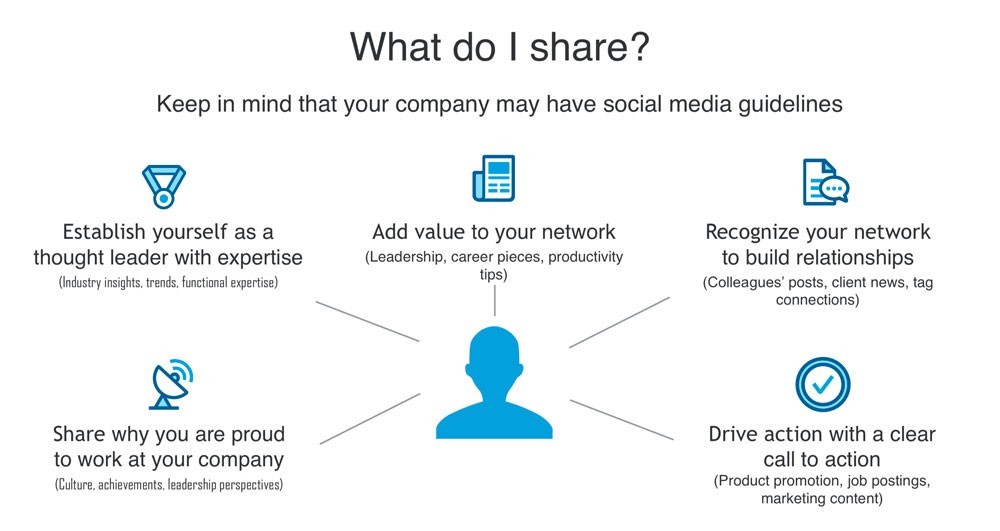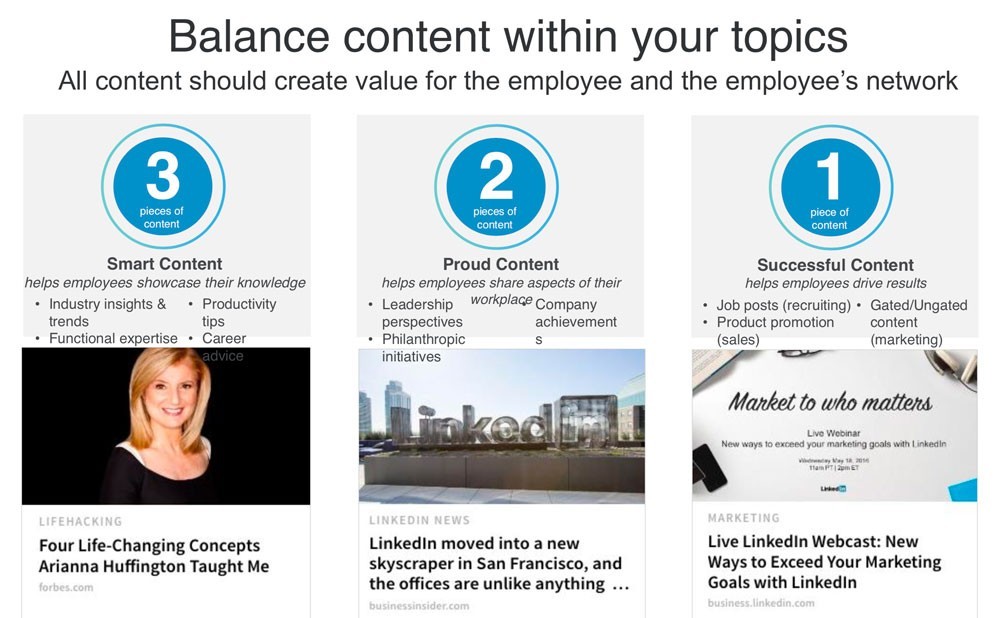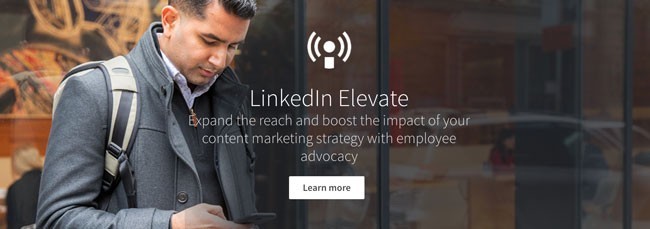How Wells Fargo Increased Candidate Engagement (and Hires) Using LinkedIn’s Employee Advocacy Tool
The recruiting team at Wells Fargo has faced two big employer branding challenges in recent years: First, as the global financial services company famed for its iconic stagecoaches, Wells Fargo needed to let potential job candidates know that it hires more than bankers and stagecoach drivers—among others, it’s looking for thousands of software engineers and designers. Second, after extensive media coverage of bank employees opening unauthorized accounts, Wells Fargo wanted prospects to know that it has a rejuvenated company culture that current employees are proud of.
The question was: what’s the best way to communicate these messages? The answer: through Wells Fargo employees. “With 270,000 team members, we had this huge opportunity to tell our story,” says Aaron Kraljev, Wells Fargo VP of employer branding. His colleague April Sherman, manager of social and digital strategy for employer branding at Wells Fargo, proposed they test Elevate, LinkedIn’s employee advocacy tool.
April thought the platform might be a way to help the recruiting teams easily share compelling content – both about Wells Fargo and other topics – with their networks and expand their candidate pools. Her talent acquisition colleagues were already using LinkedIn Recruiter, and April saw Elevate as an easy addition.
The results, April and Aaron say, have blown them away. In the first half of 2018, the program generated 1.2 million impressions and resulted in 113,000 engagements (likes, clicks, comments, and shares of articles published using Elevate). It also resulted in nearly 3,000 job applications and 180 impacted hires — candidates who viewed or engaged with content pushed out by Wells Fargo recruiters before applying for and landing a job.
Here the five steps Aaron and April took to make Elevate an effective recruiting and branding tool for Wells Fargo:
1. Give recruiters an easy-to-use tool and preapproved content
Recruiters at Wells Fargo had been hesitant to share content on their personal LinkedIn profiles, April says. “We wanted to break down that barrier,” April says, “and provide a platform where content, already curated and approved by your peers, appears for you on a dashboard that makes it easy to share.”
Here’s the way it works: Wells Fargo recruiters subscribe to different topics, leadership, say, or company culture, that they think will be most compelling for the people in their network. They go to their LinkedIn Elevate feed, see what content has been broadcast by the curation team, and select the stories they want to share. They then write a personalized intro (or, caption) and share the content with their networks on LinkedIn.
2. Decide what type of content will best engage your audience
Early on, April and Aaron selected seven broad content areas that each of their curated stories needs to fall into. For Wells Fargo, those content buckets are 1) talent branding and recruiting; 2) industry news; 3) technology and innovation; 4) Wells Fargo news; 5) professional and personal development; 6) company culture; and 7) diversity and inclusion.
They also decided they would encourage their team to avoid obvious stories that have already gone viral. “I tend to be a contrarian in how I go about my work,” Aaron says. “I look in every nook and cranny for information. Let’s not simply share everything we read on Inc.com or Forbes.”
To that end, they’ve armed their curators with a list of over 80 potential story sources, ranging from The Daily Muse to Harvard Business Review, from TechCrunch to this Talent Blog. (And, yes, that list includes Inc.com and Forbes too.)
Aaron puts a premium on funny content. “Comedy is in seriously short supply on LinkedIn,” he says. “This is a focus group of one but I’ve always found that content that was a little more lighthearted, that makes use of LOL, performs drastically better than dry, cut-and-paste content.”
Need more than a focus group of one? Elevate offers helpful audience metrics that will show you, say, what your top-performing broadcasts are and who is engaging with your content.
3. Build a strong curation team – and realize that not everyone is a skillful curator
When Wells Fargo originally deployed Elevate at the end of 2016, it had a small curation team. Now they have about 25 curators. “You need to have people who are from different areas of the business,” April says, “and who are focused on different areas of recruiting so that they can gather content that is meaningful to them and their counterparts.”
April recruits curators from her top-performing Elevate users. She also sifts through colleagues who volunteer. “Some people are better suited for content curating than others; the task doesn’t come natural to all,” April says. She monitors performance and offers tips on sourcing great content, adding compelling perspectives (captions), and sharing content from a robust set of topics.
4. Provide curators and recruiters with best practices
“We do a ton of training with both the general users and curators,” April says. Most of the instruction focuses on best practices for content sharing — the tool itself is easy to use.
“We talk a lot about what the makeup of content should be,” April says. “It definitely shouldn’t be all Wells Fargo all day long. Variety is absolutely important.”
April doesn’t see variety as random, however. In fact, Wells Fargo uses a 3-2-1 content mix that LinkedIn developed as a best practice on Elevate: 3 parts “smart” content, including industry insights, functional expertise, and productivity tips; 2 parts “proud” content, including leadership perspectives and company achievements; and 1 part “successful” content, including job posts and product or service offerings.
The training for users walks them through the program’s goals and measurements, from logins and shares to applications and hires. It recommends what to share (for starters, thought leadership content, stories that recognize the user’s network, and call-to-action items like job postings) and how often (3 to 5 times a week). It also includes a short demo video and step-by-step instructions that take a user from login to hing.
Wells Fargo also shares a LinkedIn webinar with its curators that reviews new features of Elevate; looks back at best-performing content; and includes best-practice suggestions for the three elements that the curation team controls on each story — the image, headline, and introductory text (blurbs that have fewer than 140 characters get shared twice as much).
In the Wells Fargo training, April underscores the importance of curators and users adding their own context to the stories they share. “People don’t want you just to share articles,” she says. “They actually want to hear what your thoughts are about it.” Wells Fargo counsels users to keep their intros short and, where possible, to include a thought-provoking quote, to ask a question, or to draw attention to the profile of a colleague.
5. Don’t just share content — create your own
If you embrace April’s approach and value content that isn’t being widely shared elsewhere, your company’s own content — videos, blog posts, PR releases, white papers, etc. — can be a go-to source.
“We broadcast videos that feature team members in different roles across the organization,” April says, “or just team members speaking about working at Wells Fargo, whether they’re focusing on our culture, our benefits, or how we volunteer in our communities.”
That content can be both fresh and useful. “I look for content that will educate our job seekers and candidates about what they can expect if they come to our job sites to apply with us,” April says, “or what they can expect through the hiring process.”
Final thoughts
After one year of using Elevate, Wells Fargo found it had made 400 impacted hires. “The spike in applicant flow and the number of hires we can directly attribute to our efforts on Elevate,” Aaron told Forbes.com, “has made this initiative worth more than we expected.”
Wells Fargo rolled out Elevate to increase engagement with applicants. “We don’t use Elevate just to get people in seats,” Aaron says. Hires are, instead, a bonus.
One of Aaron’s focal points for Elevate has always been the recruiters themselves. “There’s something in it for the folks using the tool,” Aaron says. “They’re getting increased interaction with their networks, with their people. They’re making new connections.”
*Photo from Wells Fargo
To receive blog posts like this one straight in your inbox, subscribe to the blog newsletter.
Topics: Candidate experience Employer brand
Related articles






